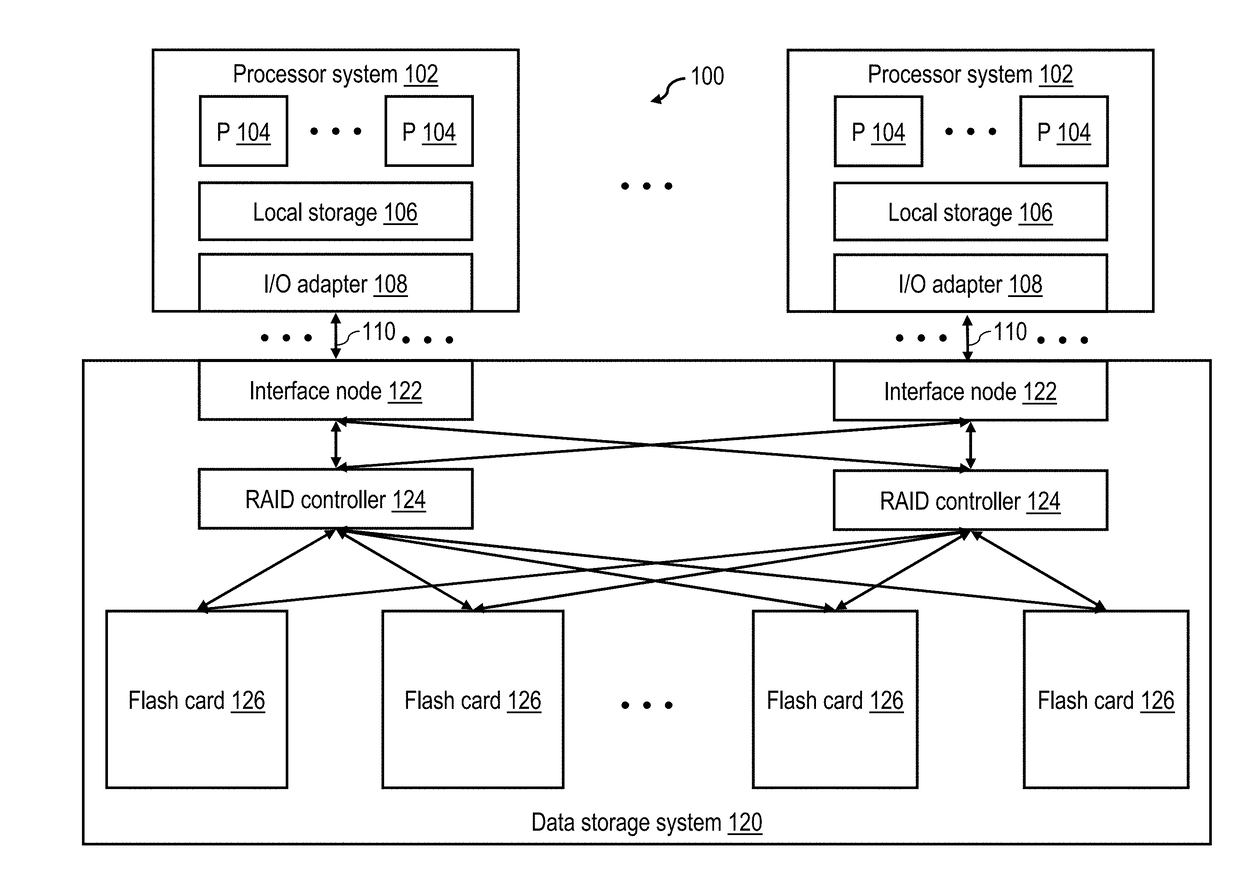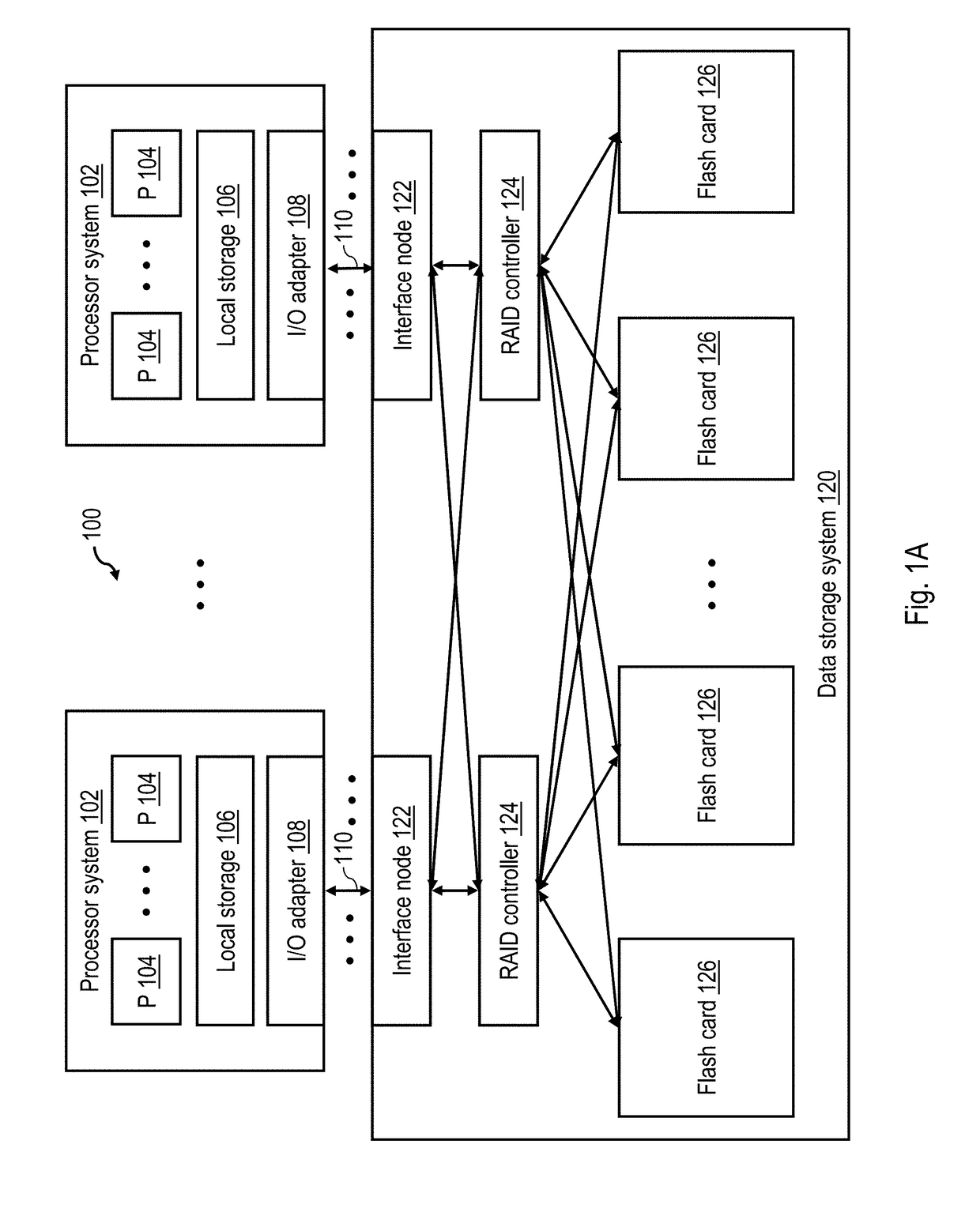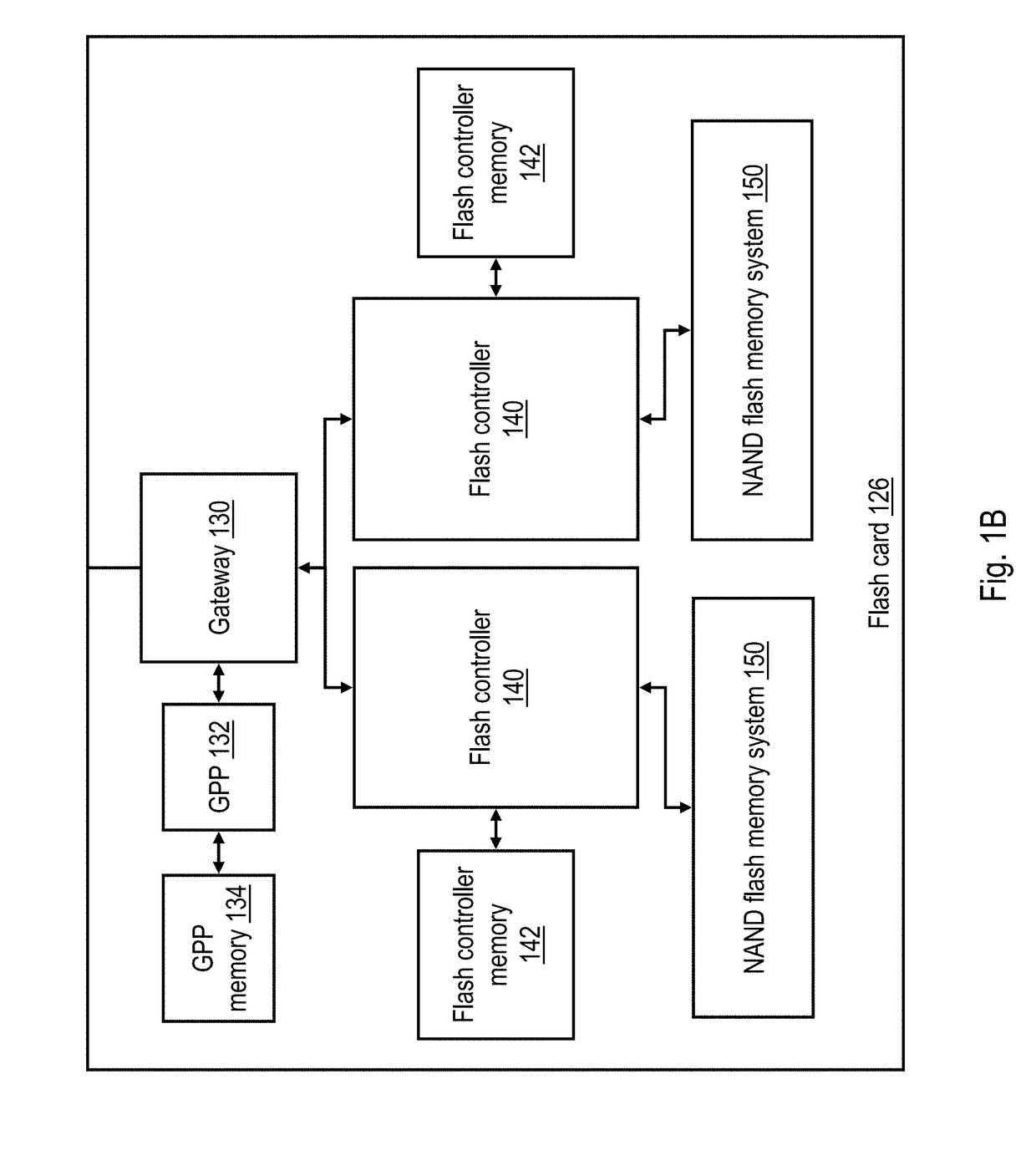Regrouping data during relocation to facilitate write amplification reduction
a technology of re-writing and data, applied in the field of re-grouping data, can solve the problems of increasing the number of writes required, re-writing user data and metadata more than once, and flash memory cannot be erased in larger units called blocks
- Summary
- Abstract
- Description
- Claims
- Application Information
AI Technical Summary
Benefits of technology
Problems solved by technology
Method used
Image
Examples
Embodiment Construction
[0018]Due to characteristics of flash memory, flash controllers have been configured to perform garbage collection to reclaim previously used flash blocks. In general, garbage collection results in increased write amplification, as garbage collection usually involves re-writing still valid data from a mostly stale (dirty) flash block. As a general rule, on flash controllers that perfectly align logical page boundaries with physical codeword containers, the garbage collection process has only been concerned with choosing a candidate flash block stripe that produces the fewest logical page re-writes to reduce write amplification.
[0019]In general, performance characteristics of NAND flash-based Solid State Disks (SSDs) are fundamentally different from traditional hard disk drives (HDDs). For SSDs, data is typically organized in 4, 8, or 16 kilobyte (kB) page sizes. Page read operations for SSDs are typically one order of magnitude faster than write operations, and latency neither depen...
PUM
 Login to View More
Login to View More Abstract
Description
Claims
Application Information
 Login to View More
Login to View More - R&D
- Intellectual Property
- Life Sciences
- Materials
- Tech Scout
- Unparalleled Data Quality
- Higher Quality Content
- 60% Fewer Hallucinations
Browse by: Latest US Patents, China's latest patents, Technical Efficacy Thesaurus, Application Domain, Technology Topic, Popular Technical Reports.
© 2025 PatSnap. All rights reserved.Legal|Privacy policy|Modern Slavery Act Transparency Statement|Sitemap|About US| Contact US: help@patsnap.com



